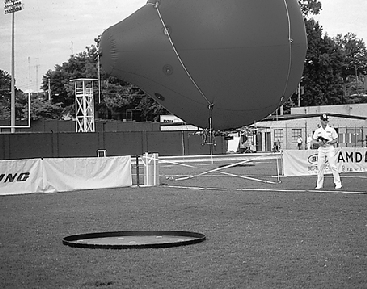| TU
Berlin Department of Computer Science |
 |
Institute
for Technical Computer Science Real Time Systems & Robotics |
| TU
Berlin Department of Computer Science |
 |
Institute
for Technical Computer Science Real Time Systems & Robotics |
| Creation | Competition | TubRob | Results | People | Links |
| 1 Creation |
The flying robot TubRob has been built in the framework of student project courses for participation in an competition, the International Aerial Robotics Competetion. Development began in October 1992 and lasted till the date of the competition in the summer of 1995. |
| 2 Competition | ||||||
The Association for Unmanned Vehicle Systems annually organizes a competion for flying robots, which is open to university teams. In the year of 1995, the task was to collect six metal disks randomly distributed in a 2 m circle, transport them one after the other across a barrier and drop them in the target area.
|

| 3 TubRob |
|
Microcontrollers Specifications:
Positioning System Software |
| 4 Results |
|
After the competition TubRob was shown at the exhibition on
the occasion of TU Berlin's 50th anniversary and at the "Feast
of Ideas" (Fest der Ideen) initiated in September 1997 by
the President of the Federal Republic of Germany. |
| 5 People |
David Hanisch, Olaf Kubitz, Marek Musial, Martin Schlicker, Robert Scholz, and Roland Stenzel were the students being involved in the project all the way from the start to the end. Further contributers were Burckhardt Bonello, Giorgio Brasachhio, Knut Dalkowski, Thomas Dietrich, Jürgen Focke, Peter Gober, Robert Junghans, Reinhard Koehn, Bernd Krünelke, and Steffen Müller. Engaged as supervisors and teachers were Wolfgang Brandenburg and Marion Finke. |
| 6 Links |
|
For more information, feel free to contact Wolfgang Brandenburg or Marek Musial. |
| previous topic | back to MARVIN's homepage |
| Last update 18.01.2000 by Marek Musial | Real Time Systems & Robotics |